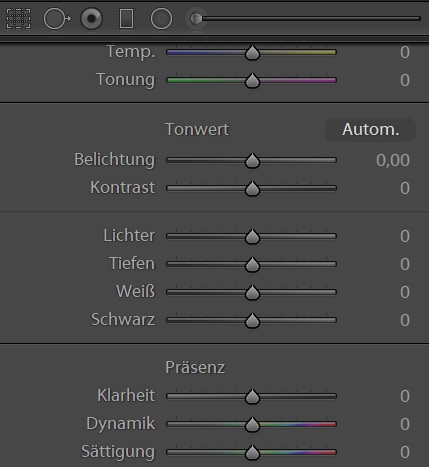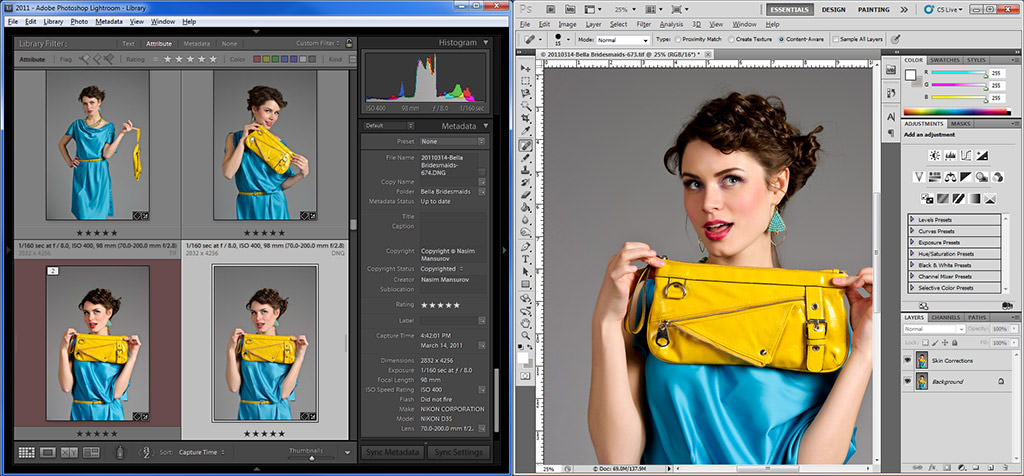

#Lightroom photo editing flow process Patch
I didn’t want to spend hours trying to use the healing brush or patch tools because there weren’t many clean areas to sample from. I then opened a second photo of a small iceberg that had a clean background.So, I opened the file in Photoshop and added some canvas size. In addition, there isn’t’ enough space around the iceberg (tight spaces lead to tension, and I wanted this image to have a peaceful feeling). In this example, I really liked the shape of the iceberg, but the algae bloom and the small pieces of ice in the water were too distracting.While it’s always my intent to make as many corrections to tone and color as possible with the raw photograph in Lightroom, when it’s time for heavier retouching, making complex selections, and compositing multiple images together, I move to Photoshop to do the heavy lifting.Even when I know an image isn’t going to be perfect straight out of the camera, I can pre-visualize what I can create after-the-fact. Lightroom and Photoshop allow me more freedom with my photography. To draw attention to the splashing drops of water, I used the Adjustment Brush to add contrast and increase exposure.

I used a second adjustment to burn (darken) other areas. When using the Adjustment brush, I lowered the Flow amount, used a large soft-edged brush, and painted several times over an area to slowly “build” up the effect in a more natural looking way. Then, I used the Adjustment Brush to dodge (lighten the exposure on) the ice, making sure that I also adjusted the reflection.Here I followed the same workflow as the previous image: enabling the lens correction options, cropping, and making global tonal and color corrections in the Basic panel.

In these less-than-ideal situations, we move forward doing what we can with what we have, confident we can still shape and form our vision in post-processing. In a perfect world, we would have the time and equipment necessary to light our subject exactly the way that we want to, but in the field, there are often obstacles like time constraints, weight restrictions for equipment, small spaces etc.
Finally, I used the Spot Removal tool to remove the darker shadow on the left as well as some distracting imperfections and drips in the ice. I added local contrast and clarity by painting with the Adjustment Brush, helping to make the icicles pop and boost edge definition. As a result, the sky lost its yellow color so I painted in the sky area with yellow using the Adjustment Brush to add depth and create color contrast between the foreground and background. I adjusted the white balance of the image to neutralize the ice in the foreground by moving the Temperature slider towards blue and the Tint slider slightly towards magenta. I also increased the Contrast slider and decreased the Highlights slider to retain detail in the brighter area of the ice. I used the Whites and Blacks sliders in the Basic Panel to extend the dynamic range of the photograph across the entire histogram. Because of the cloud cover, the original capture was flat and lacking in contrast. Then, I cropped and straightened the image to better balance the composition (and remove the distracting ice on the left side of the frame.). In the Lens correction panel, I began my editing by enabling both the Remove Chromatic Aberration and Enable Profile Correction options to remove any distortion and vignetting caused by the lens. Be sure to follow the links for more in-depth tutorials.Ĭreating Color Contrast with Local Adjustments LIGHTROOM I’ll let Julieanne take it from here in her own words. While we aspire to capture all of the key elements to make a successful image in camera (light, gesture, composition etc.), post processing is another tool that can be used to craft and refine your vision, and if you can pre-visualize what an image can become, you have an advantage.” Like many photographers, Julieanne uses Lightroom and Photoshop to reinforce her visual narrative, and today we’re lucky to have Julieanne give us a true behind-the-scenes look at her editing process and share a few of her secrets. On her approach to photography, Julieanne says, “It’s important to know what you can do in post when shooting. Longtime Photoshop and Lightroom Evangelist, Julieanne recently had the opportunity to spend a few days in Antarctica, and she returned with an impressive portfolio featuring the chilly landscape. Travel presents an incredible opportunity to flex your photography muscles, and no one delivers the goods quite like our own Julieanne Kost. Antarctic Photo Editing Tips In Photoshop and Lightroom with Julieanne Kost







 0 kommentar(er)
0 kommentar(er)
